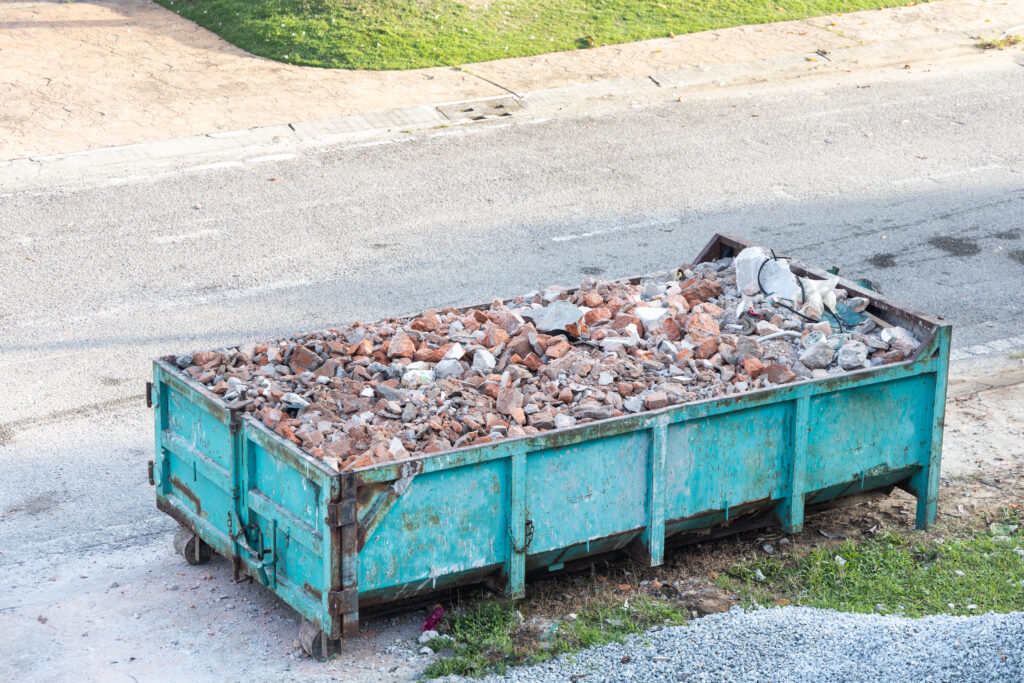When you’re knee-deep in a California construction project, the last thing you want is to realize your dumpster choice isn’t cutting it.
From strict local regulations to environmental considerations, selecting the right dumpster in the Golden State involves more strategy than you might think.
Let’s break down how to make this crucial decision for your construction project.
Understanding California’s Unique Requirements
Environmental Regulations

Dumpster Can Be Used In All Of Construction Projects
California leads the nation in environmental protection, and that extends to construction waste management. Cities from San Diego to Sacramento have specific requirements about waste sorting and recycling. Your dumpster choice needs to align with these regulations, which often mandate separating recyclable materials from general construction waste.
Regional Considerations
What works in the Bay Area might not fly in Los Angeles County. Each region has its own set of rules and practical considerations. Coastal areas might require special covers to prevent debris from becoming marine pollution, while desert regions might need different containment features to deal with high winds.
Size Matters
Common Dumpster Sizes
Let’s talk real numbers here. Construction dumpsters typically come in 10, 20, 30, and 40 cubic yard sizes. But don’t just go for the biggest option thinking it’s the safest bet. Consider these practical applications:
- 10-yard: Perfect for small remodels and debris from single-room renovations
- 20-yard: Ideal for mid-sized projects like kitchen remodels or small demolitions
- 30-yard: Great for new construction or whole-house renovations
- 40-yard: Best for major commercial projects or complete demolitions
Project-Specific Sizing
The trick is matching your dumpster size to your project phase. A kitchen remodel might start with a smaller dumpster for demolition and need a larger one during the construction phase. Smart contractors often schedule different sizes for different project stages.
Cost Considerations
Hidden Fees to Watch For
California dumpster rental comes with its own set of potential charges. Watch out for:
- Weight overage fees (especially important with heavy materials like concrete)
- Extended rental periods beyond the standard window
- Special permits required by your city
- Environmental fees specific to California regulations
Maximizing Value
Sometimes spending more upfront saves money in the long run. Opting for a slightly larger dumpster might cost less than paying for multiple swaps of a smaller one. Consider your project timeline and material volume carefully.
Material-Specific Solutions
Mixed Construction Waste
Most renovation projects generate a mix of materials. Standard construction dumpsters can handle wood, drywall, and general building materials. However, California often requires separation of recyclable materials like metal and clean wood.
Specialized Needs
Some materials need special handling:
- Concrete and masonry (often requires low-sided dumpsters)
- Hazardous materials (needs separate, specialized containment)
- Green waste from landscaping (might require specific yard waste dumpsters)
Placement and Logistics
Site Considerations
Where you put your dumpster matters more than you might think. Consider:
- Ground surface stability
- Access for delivery and pickup
- Distance from the work area
- Local ordinances about street placement
- Protection of existing landscaping or hardscaping
Permit Requirements
California cities often require permits for dumpster placement, especially on public streets. Some areas also have specific time restrictions or placement requirements to maintain neighborhood aesthetics.
Timing Your Rental
Project Scheduling
Timing is crucial for cost-effective dumpster rental. Consider:
- Project phases and material generation timing
- Weather impacts (especially during California’s rainy season)
- Coordination with subcontractors
- Municipal restrictions on work hours and waste removal
Seasonal Considerations
California’s climate affects construction waste management differently across the state:
- Coastal areas might need covered dumpsters during winter rains
- Valley regions might require dust control measures
- Mountain areas need snow-accessible placement in winter
Environmental Impact
Recycling Requirements
California’s commitment to environmental protection means many materials must be recycled:
- Wood waste
- Metal scraps
- Concrete and masonry
- Cardboard packaging
- Clean fill dirt
Sustainable Practices
Many contractors are going beyond basic requirements:
- Choosing companies with green waste practices
- Requesting detailed waste diversion reports
- Selecting appropriate-sized containers to minimize trips
Safety and Compliance
OSHA Requirements
Safety isn’t optional. Your dumpster setup must comply with OSHA regulations:
- Clear access paths
- Proper lighting around dumpster areas
- Fall protection when needed
- Proper signage and marking
Local Compliance
Different California jurisdictions have varying requirements for:
- Fire safety clearance
- Street obstruction permits
- Neighborhood notification
- Time restrictions for filling and removal
Choosing the right construction dumpster in California requires balancing multiple factors: regulatory compliance, project needs, cost efficiency, and environmental responsibility. By carefully considering each aspect and planning ahead, you can ensure your waste management solution supports rather than hinders your construction project’s success.
Remember, the cheapest option isn’t always the most cost-effective in the long run. Take time to research local requirements, understand your project’s specific needs, and choose a reputable provider who understands California’s unique construction waste management landscape.



